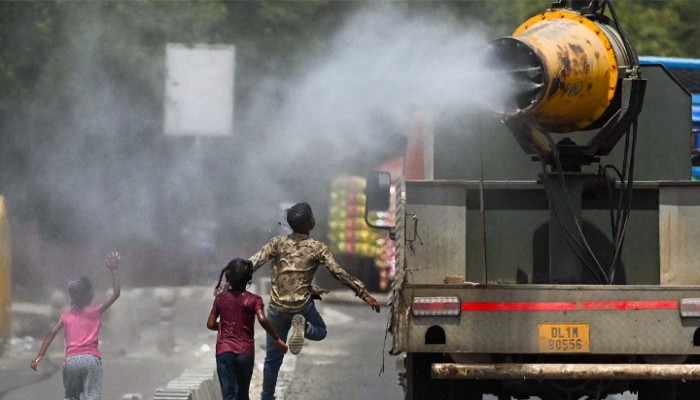
Delhi Records Historic High of 52.9C, Triggering Water Shortage Concerns
Staff Report , Published: May 30, 2024, 6:05 am

Delhi experienced an unprecedented temperature spike, reaching a record-breaking 52.9C (127.2F), prompting concerns about water scarcity in the Indian capital.
A heatwave alert has been in effect across large parts of India for the past week. However, the India Meteorological Department (IMD) announced on Wednesday that temperatures in the suburb of Mungeshpur soared past 50C for the first time in the city's history.
This temperature surge, surpassing expectations by more than 9C, marked the second consecutive day of record-breaking heat. On Tuesday, Mungeshpur and Narela registered a high of 49.9C, surpassing the previous 2002 record of 49.2C.
The IMD issued warnings regarding the health implications of the extreme heat, particularly for vulnerable groups such as children, the elderly, and individuals with underlying health conditions. They emphasized the high risk of heat-related illnesses and heatstroke, stressing the need for utmost caution.
Wednesday's temperature shattered the nation's previous heat record, set in 2016 when Phalodi in Rajasthan reached 51C.
Scientific research indicates that the climate crisis is exacerbating heatwaves, making them longer, more frequent, and more intense.
Authorities in Delhi cautioned about potential water shortages amid the scorching conditions. Water Minister Atishi Marlena called for collective action to curb wasteful water usage, announcing measures such as reducing water supply frequency in certain areas to address the scarcity.
Residents described experiencing extreme discomfort, with reports of tap water reaching boiling temperatures and even touching the steering wheel of a car causing burns.
Newspapers circulated advice from healthcare professionals, urging people to stay indoors and wear lightweight, breathable clothing. However, for many, such precautions were impractical, including laborers and street vendors who had to continue working despite the harsh conditions.
Politicians, amidst ongoing elections, held rallies despite the blistering heat, urging attendees to stay hydrated and cool.
The soaring temperatures have been attributed to hot winds from Rajasthan, where temperatures exceeded 50.5C on Tuesday. Casualties of the heatwave, primarily comprising poor laborers and homeless individuals, have overwhelmed hospitals in Rajasthan's capital, Jaipur.
Some Indians have sought refuge in cooler regions, but even traditionally temperate areas like Kashmir have experienced unprecedented heatwaves. Meanwhile, Cyclone Remal brought gales and heavy rains to West Bengal and Mizoram, claiming numerous lives in India and Bangladesh.
The Bangladesh Meteorological Department linked the intensity of Cyclone Remal to climate change, highlighting the ongoing impact of climate breakdown.